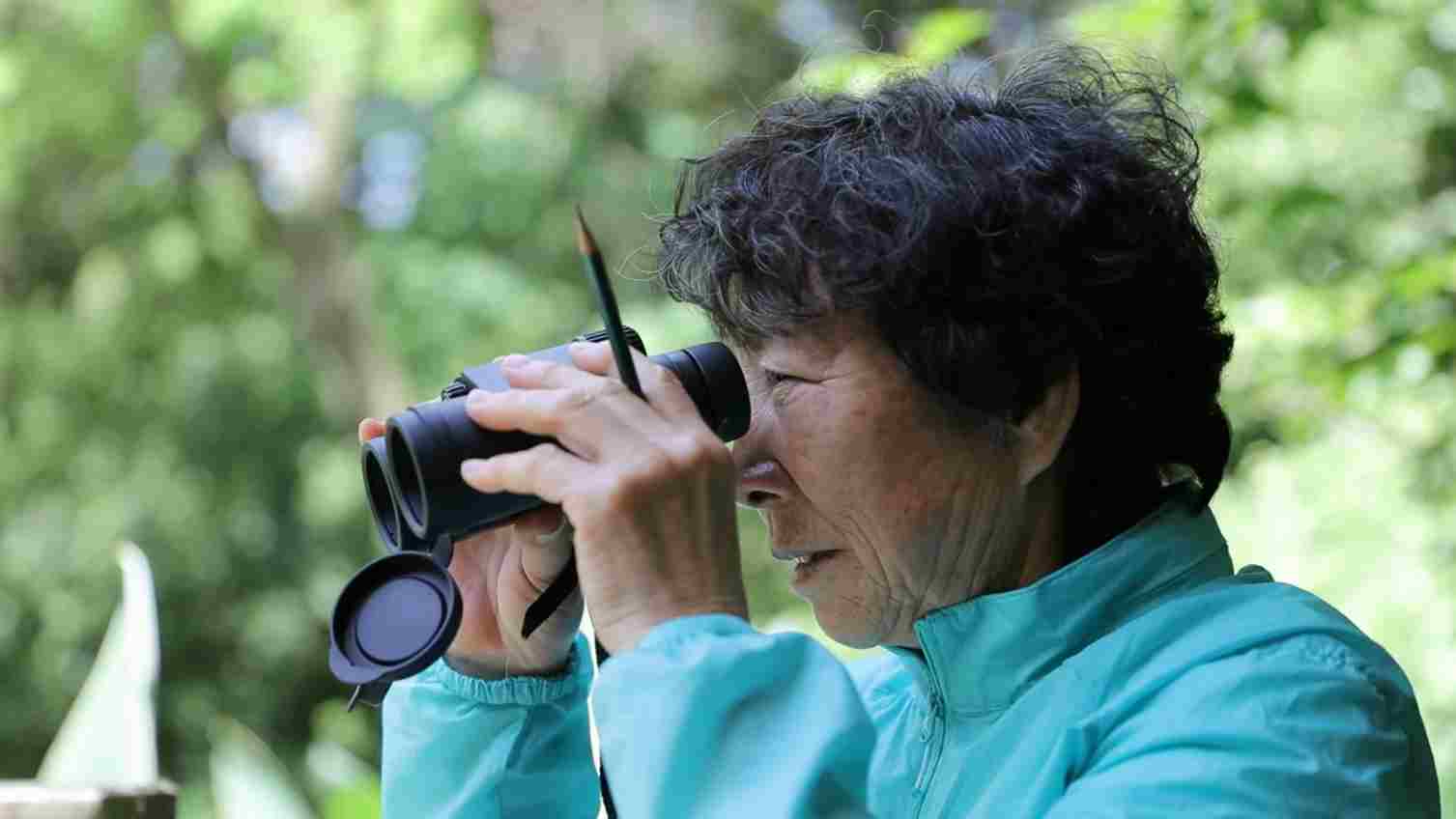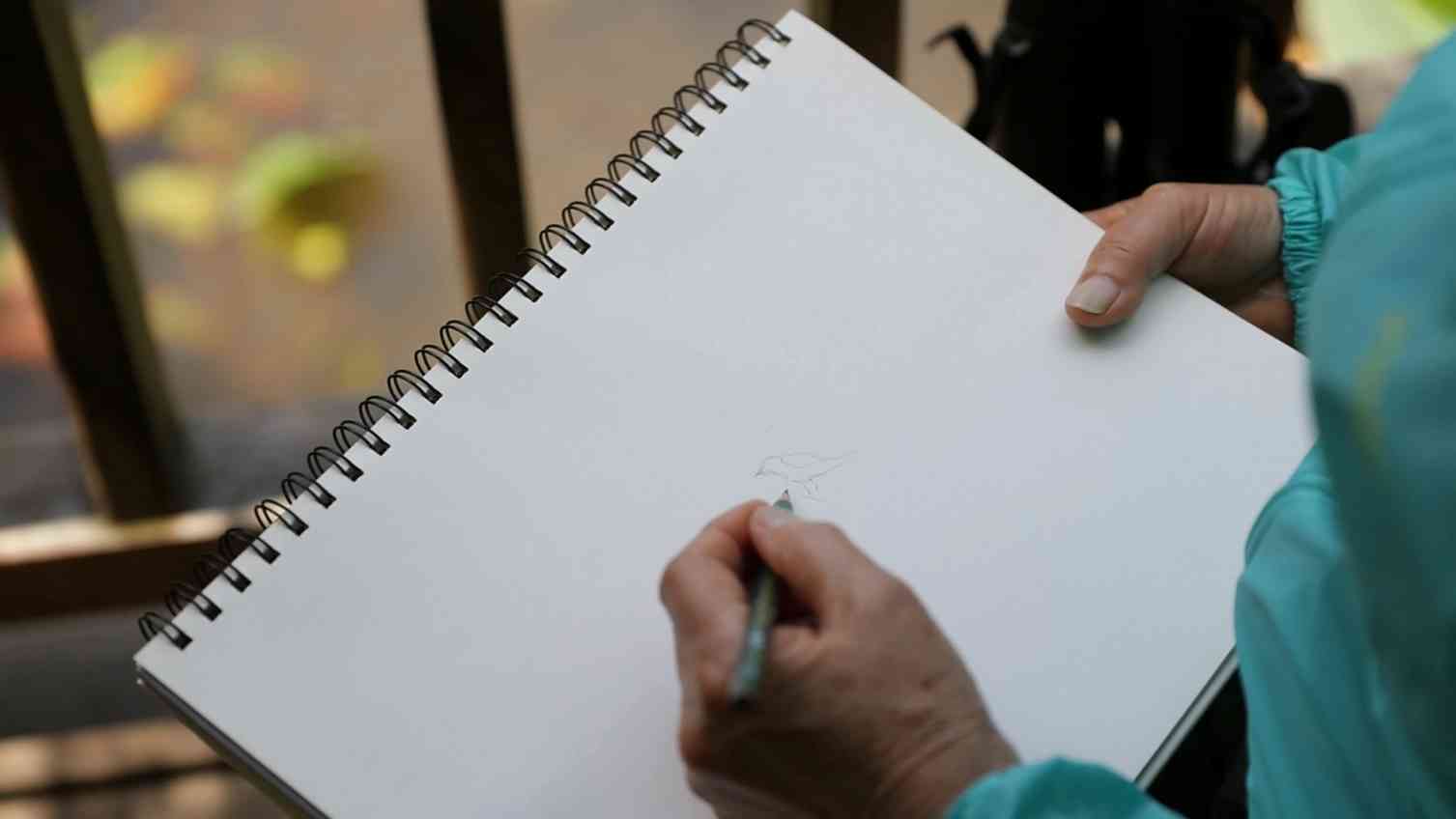03:44
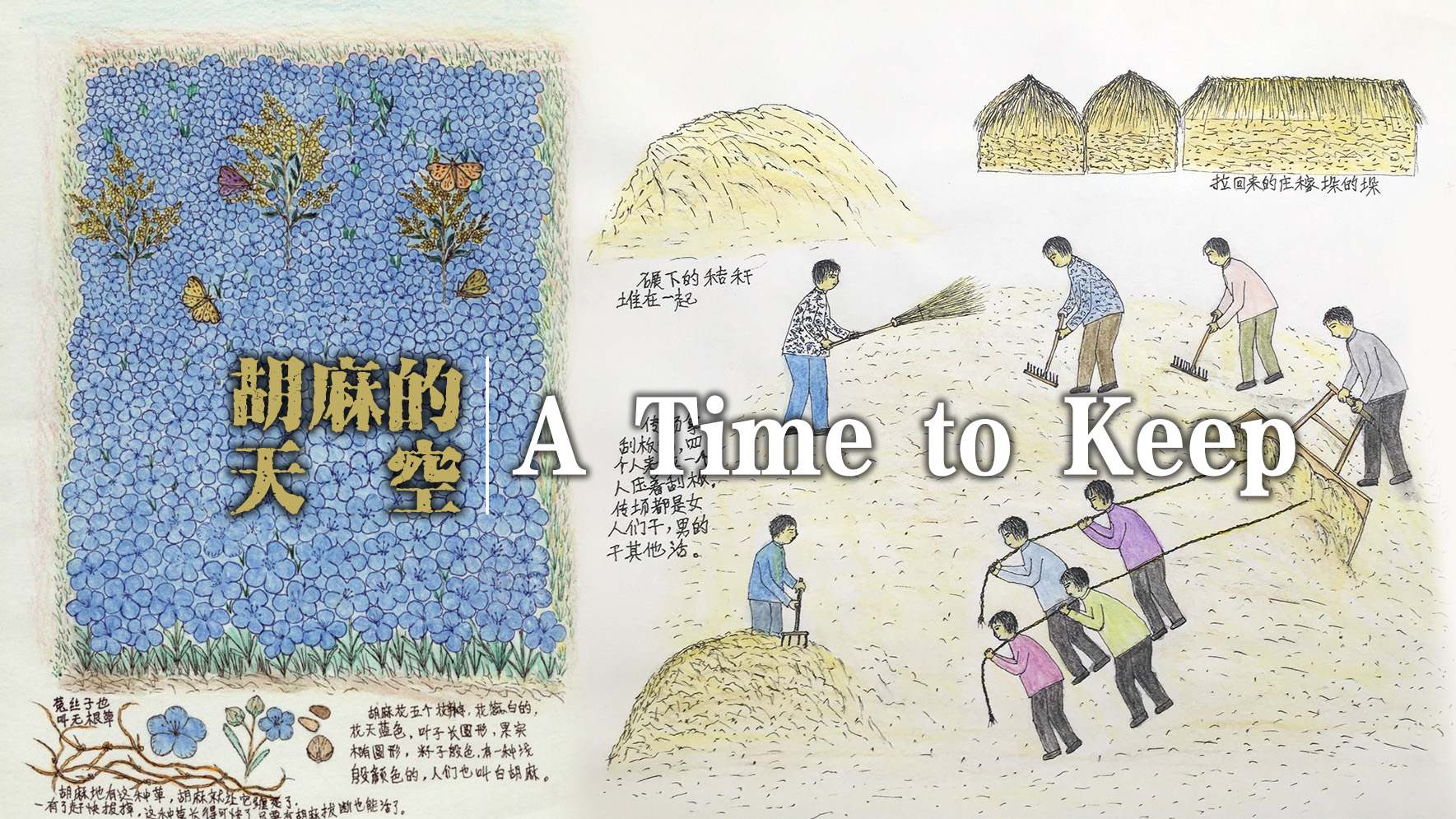
A heartwarming book "The Sky of Flax" was published in 2015.
The picture book records everything in nature, featuring both the memories of a peaceful rural life, and the feelings of a surprising urban life.
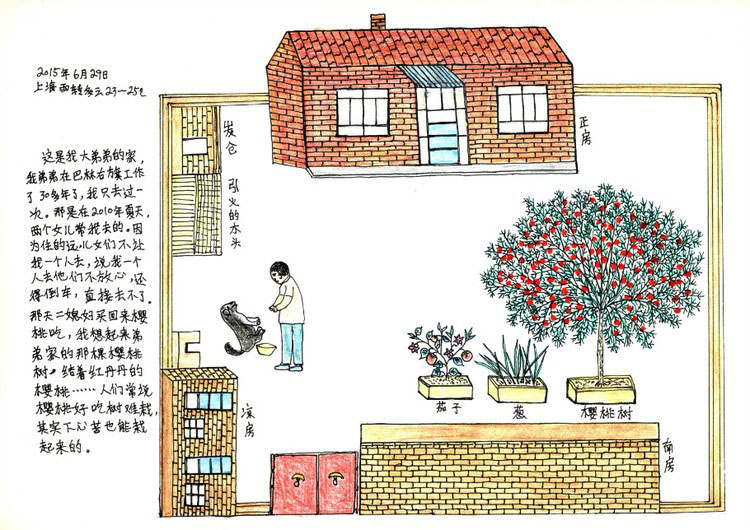
Picture from Qin's paintings.
Picture from Qin's paintings.
"The cherries remind me of the cherry tree at my first younger brother's house. We live far from each other and seldom meet. But we talk on the phone. I draw his yard as a souvenir. Their puppy is so cute. It never barks when I feed it, just stands on its hind legs and stares at me."
- An excerpt from Qin Xiuying's blog post
The simple illustrations and plain words unexpectedly touched many readers' hearts. "It reminds me of my grandmother. I have new respect for my mom. And I really miss her," a netizen commented.
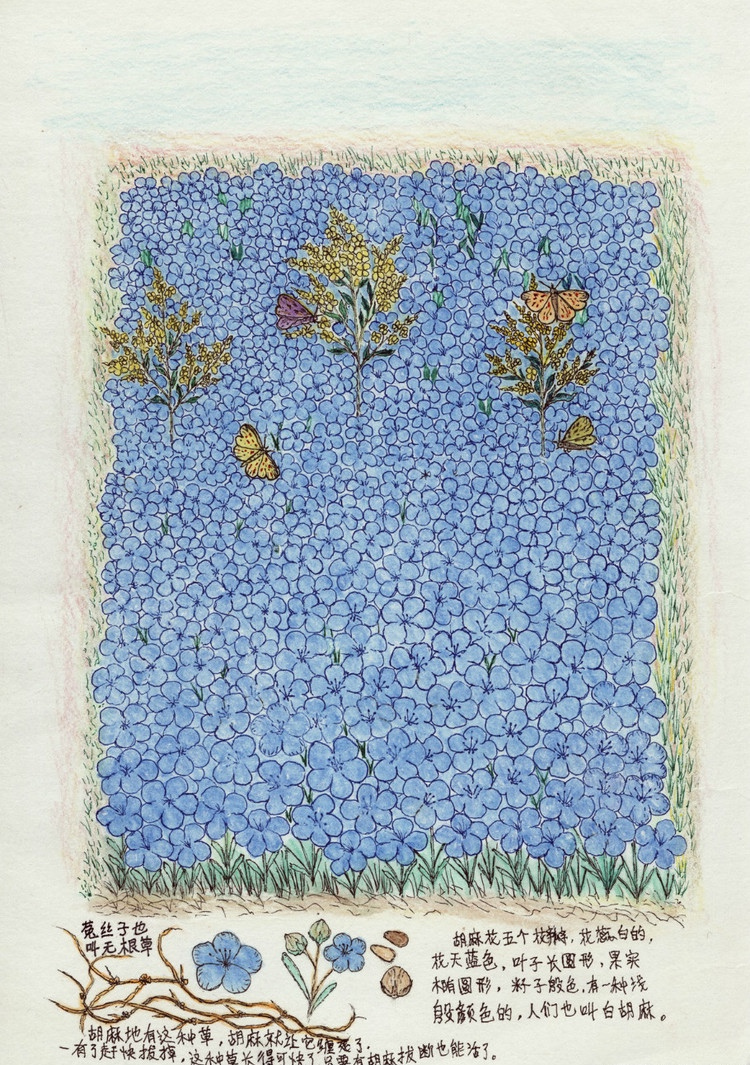
Flaxes in Qin's paintings.
Flaxes in Qin's paintings.
The author of the book, 71-year-old Qin Xiuying, is an illiterate countrywoman from Inner Mongolia Autonomous Region. She studied only one and a half years in primary school. Her life was basically filled with doing farm work and raising her children.
Her husband passed away in 2009, making her life even more enclosed and isolated. Her daughter-in-law was worried about her and brought her to Shanghai in 2011.
"I don't speak Mandarin or Shanghai dialect," said Qin about how hard it was to make friends in the new city. "Perhaps that's how it is in the big cities.”
Her son and daughter-in-law encouraged her to learn writing and painting from the start. They even helped her start an online blog titled "Living Beside the River."
"I'd never tried writing before. Now that I'm old, I may start to learn all over again."
She wrote about the plants she saw, as if they were her best friends. She believes that they are ordinary but persistent, versatile beings.
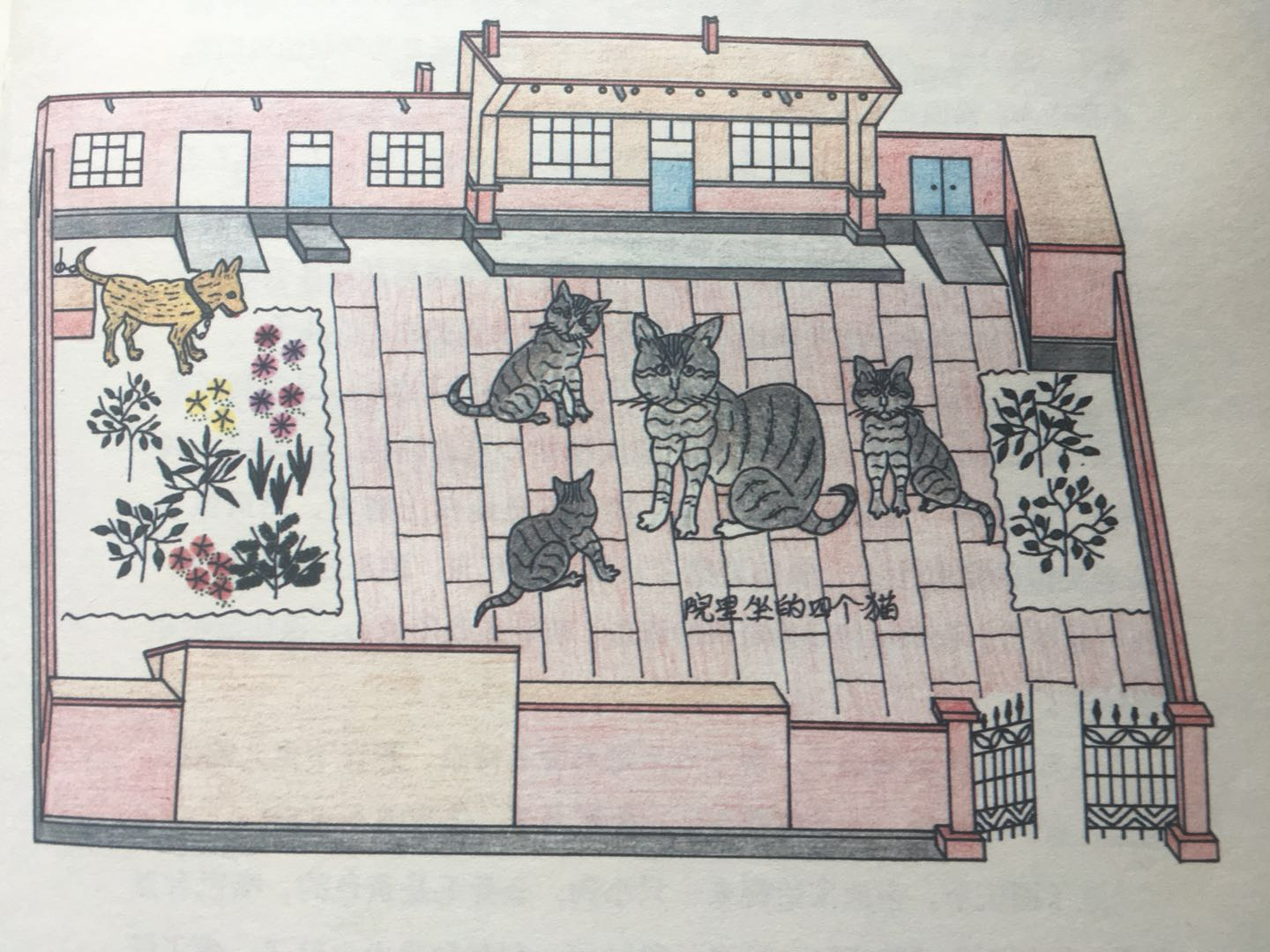
Photo from Qin's paintings.
Photo from Qin's paintings.
"These are fruits of Chinese Rose and Chinese Holly. The red fruits are all over the holly tree. When it gets cold, they fall on the ground. Some leaves of the Yellow Hibiscus turn red. Some of the Chrysanthemums bloom. They like cold weather, the colder the better."
- An excerpt from Qin's blog post
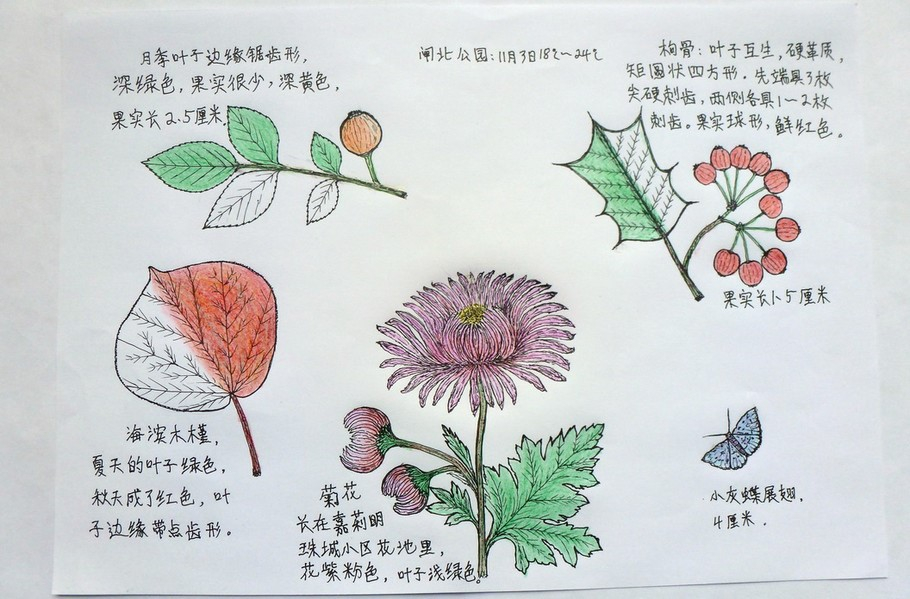
Chinese rose in Qin's paintings.
Chinese rose in Qin's paintings.
"The Primula poissonii are beautiful. The flowers have three colors. They are bright and beautiful. I like the nature in South China."
- An excerpt from Qin's blog post
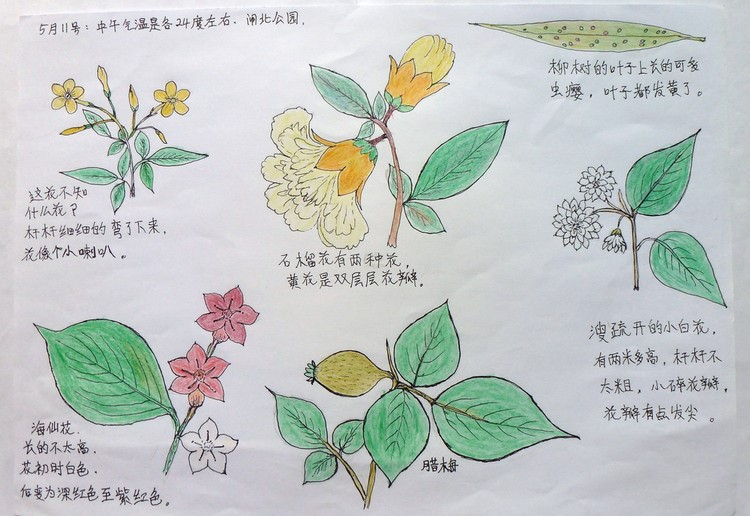
Primula poissonii in Qin's paintings.
Primula poissonii in Qin's paintings.
Sometimes, the plants recall distant memories of her late relatives.
"December 6th of lunar calendar, my son got married. I went to the wedding and saw red willows and Nitraria tangutorum at the gate. I missed my long gone relatives. I have little memory of childhood, but I remember that my eldest uncle had only one ear. I was curious and I asked my mom privately. She told me that in 1940s, the county government made him deliver nitraria upriver. He didn't have warm clothes. He went for over 50 km by cart. His ear got frostbite and fell off when he touched it. It was the coldest days of the year. Freezing cold. I was terrified after hearing the story. It was supposed to be a happy day, yet I was lost in memories. I missed them. After that, I draw them for the memory."
- An excerpt from Qin's blog post
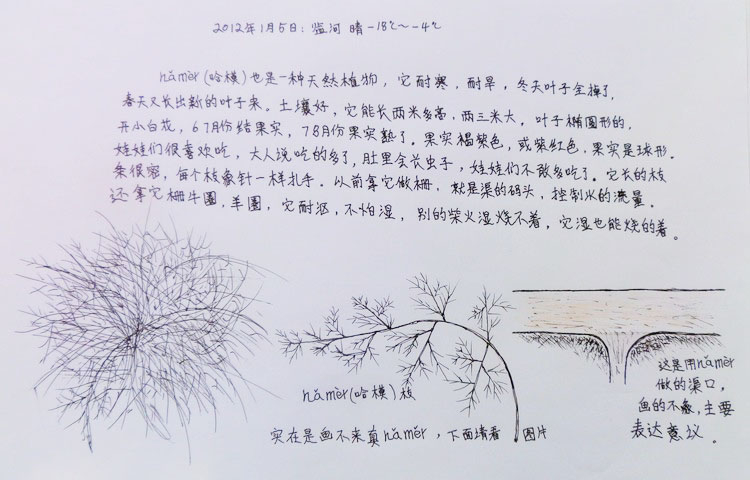
Nitraria tangutorum in Qin's paintings.
Nitraria tangutorum in Qin's paintings.
As there's no heating in Shanghai, Qin went back to Inner Mongolia in the winter and wrote notes about her farmwork and social activities, like how to till the land, or how to cook grain. Humans and nature never get as close as they do in her book. She revives things that were lost a long time ago.
"The flaxseeds are rich with oil. The flax oil used to be a daily necessity. People used it as lamp oil, lube oil, and rust remover. When the ceramic ware was broken, we pieced it together, wrapped it with sliced flax barks, and covered the cracks with the mixture of ground flax bark and red mud sifted from the water channel. When the mud was dry, we rubbed fax oil on the surface a couple of times so that it could last long. The mud wouldn't break even in water. You can always put on another layer of flax oil and it can be more solid than a new one."
- An excerpt from "The Sky of Flax"
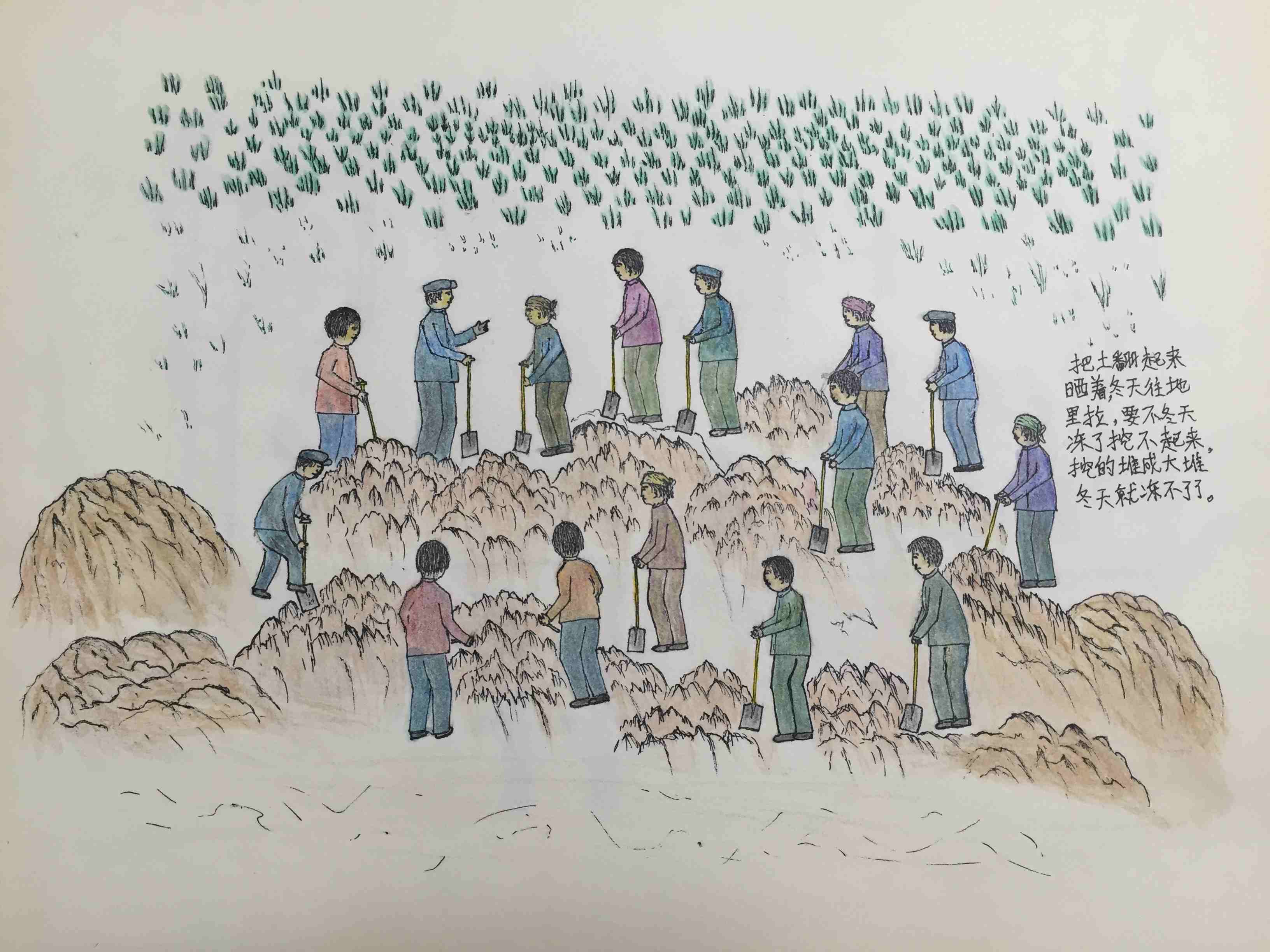
Picture demonstrates scenes of Chinese people farming the land; Picture from Qin's paintings.
Picture demonstrates scenes of Chinese people farming the land; Picture from Qin's paintings.
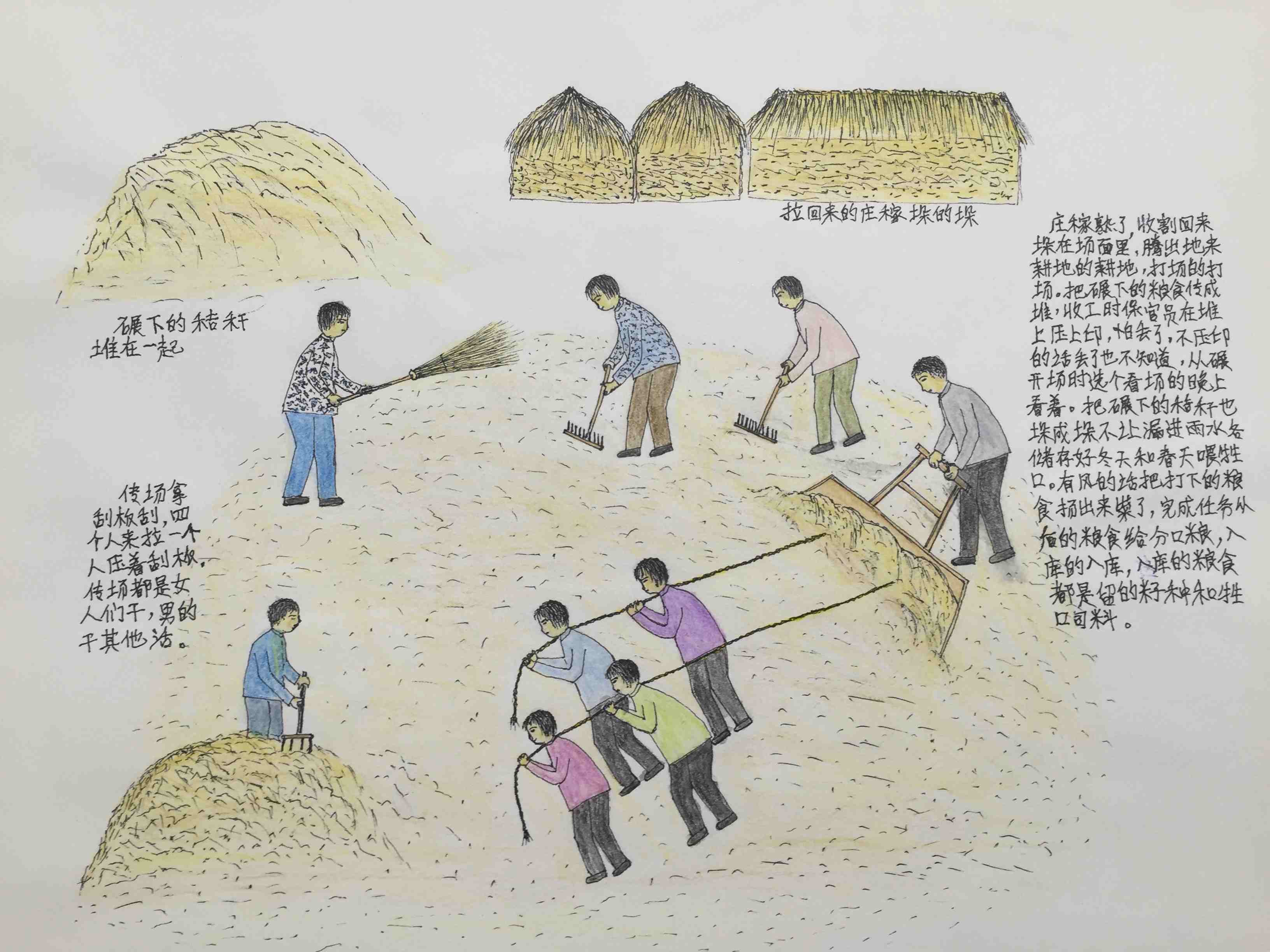
Picture demonstrates scenes of Chinese farmers collecting stalks; Picture from Qin's paintings.
Picture demonstrates scenes of Chinese farmers collecting stalks; Picture from Qin's paintings.
Chinese writer Liu Zhenyun says in the foreword of "The Sky of Flax" that, the illustrations "are stories between an individual life and the nature around it." Because of the hidden wisdom, "The history of the individual life can contain the histories of the community, the nation and all the human beings.”
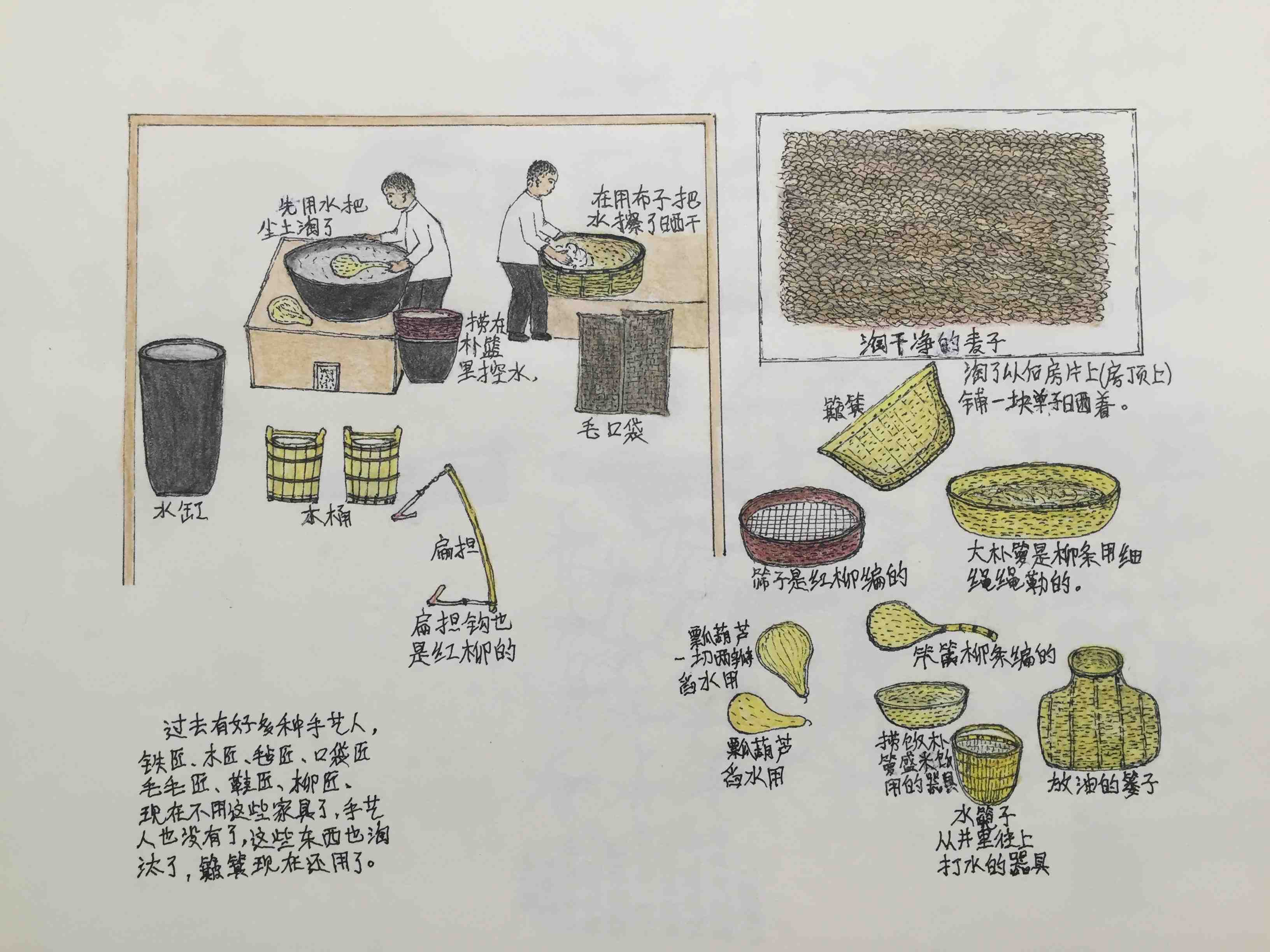
Picture demonstrates the steps for cleaning wheat and the different kinds of tools used in the kitchen; Picture from Qin's paintings.
Picture demonstrates the steps for cleaning wheat and the different kinds of tools used in the kitchen; Picture from Qin's paintings.
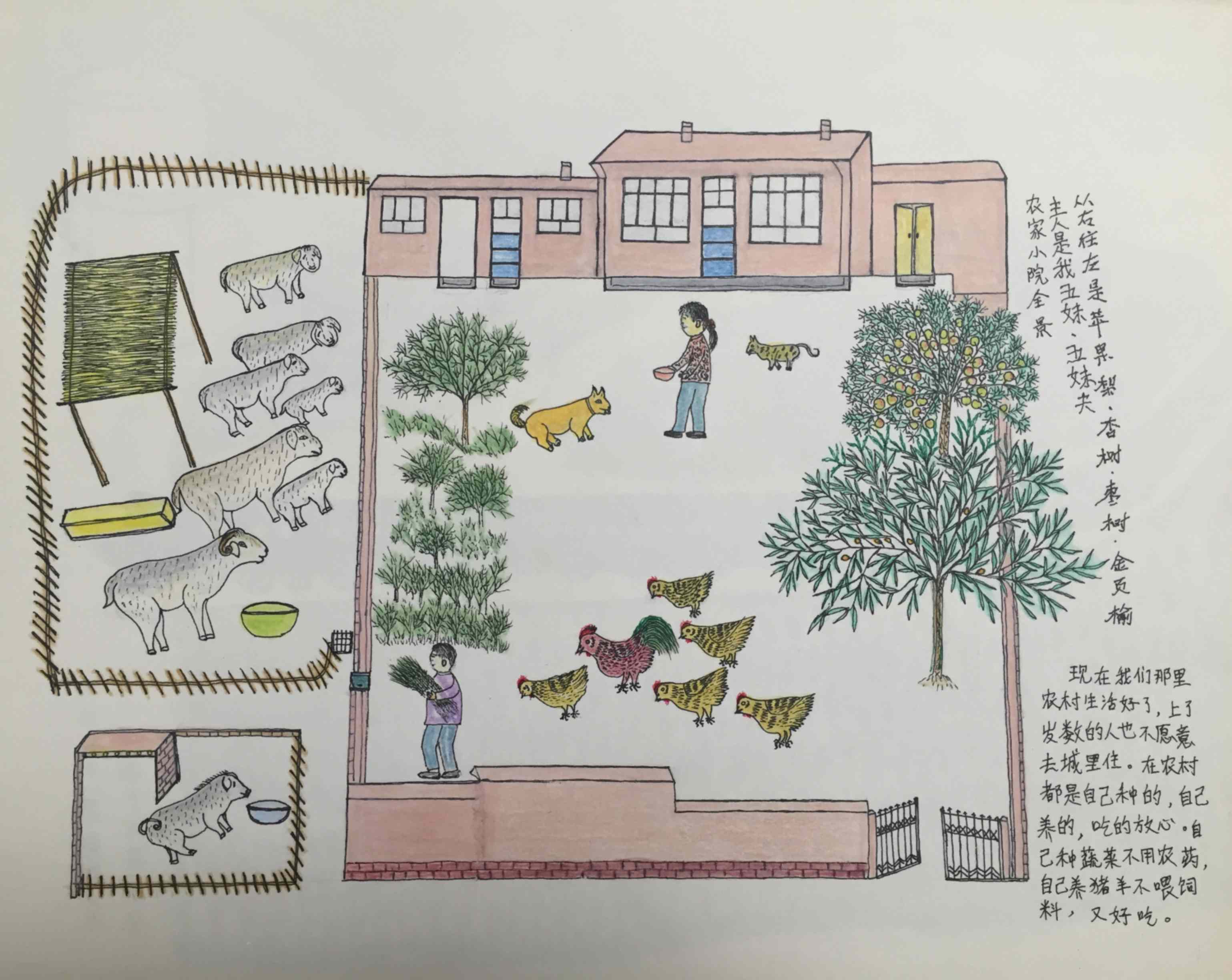
Picture from Qin's paintings.
Picture from Qin's paintings.
That being said, Qin doesn't really care about these grand concepts: "I don't paint for fame or money. I just want to tell the young people how life was like in the past, and how we got here in the first place."
In the countryside and in the city, Qin continues to draw what she sees around her. As flowers bloom and wither, the seasons go round, all are recorded in her notes of nature. Thanks to the company of the animals and the plants, she doesn't feel lonely anymore.

Picture demonstrates when Qin's hometown becomes accessible by train; Picture from Qin's paintings.
Picture demonstrates when Qin's hometown becomes accessible by train; Picture from Qin's paintings.

The story is one in The 1.3 Billion series exploring the diverse lives that make up China.
The story is one in The 1.3 Billion series exploring the diverse lives that make up China.





